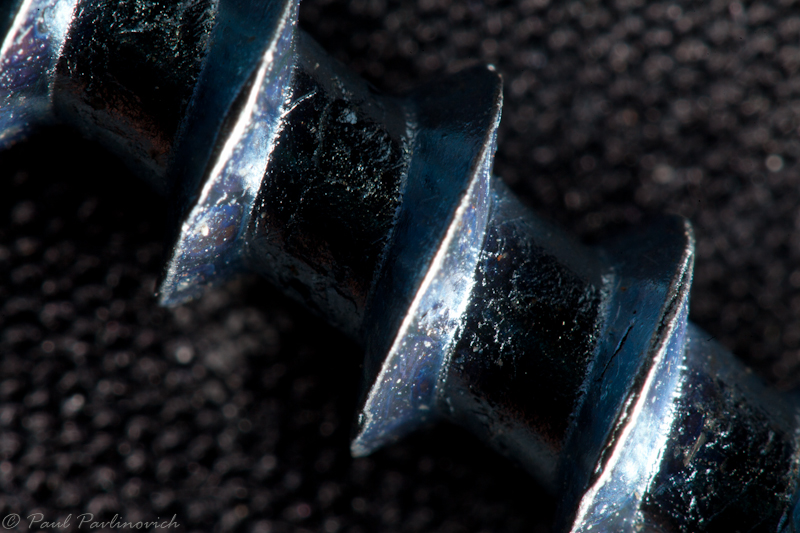You've been out to shoot the moon right? How did it go? Tiny blown out white spot or did you manage something nice and interesting? So many times I see people's moon shots pop up on social media and I cringe a little bit inside. This article will help you to do justice to our Earth's next door neighbor.
Is there some magic trickery to getting a good shot of the moon with your average camera? No, just think about what you are shooting. Really you're not shooting the moon, you're shooting the sun as it is reflected off the moon. The sun is bright - really bright so even though the moon is only reflecting the sun's light back to you it too is really really bright.
There are a few tips that will help you. Try to catch it as it rises or as it sets near the horizon, this is when it appears it's biggest. If you wait until later unless you've got some pretty serious gear you're going to get nothing but that little spot even you expose it really well it's still only a few pixels. Want to know how close the moon was to the horizon in the shot above? Take a look at the next one and you'll see it.

This is one of the Port of Melbourne cranes and I'm standing across the Yarra River from it shooting from Spotswood. There are a couple of things you'll notice about this image, the first is that the crane and other items in the image like the ship are pretty small compared to the moon and they're dark. But wait, don't you need a long exposure to shoot at night? Remember what I said earlier, the moon is really really bright so no you don't. This image and the one above are shot at ISO 100 f/11 1 second on a 200mm lens with a Hoya ND400 (a bit under 9 stops of light reduction). The other thing to remember is that the moon relative to the earth moves really really fast. If you expose for anything more than a short time you're going to get a trail instead of a nice clean shot.
Now that
ND black glass I was talking about is the next little hint, it wasn't dark when I shot this, well not completely dark anyway. It was just after dusk. The black glass helped me lose that light from the sky and the ground to isolate the moon. I didn't really care about the crane because I knew I only wanted the moon but I added this one to give some context.
The time of year is important, a couple of times each year and some years better than others (last year was fantastic) we get whats described as a Super Moon where it appears much more massive than you would normally expect
This shot was taken from Kalorama lookout on the side of Mt Dandenong when the moon briefly cleared the clouds for less than four seconds. I was lucky most other people had gone home when the moon first rose and hid among the clouds. I stayed there and froze waiting for this shot and eventually I was rewarded with this beautiful clear sharp shot. It was smaller than I would have liked had I caught it nearer to the horizon but this shot was worth the wait in the cold. This one is a 200mm lens plus a 2x extender giving 400mm and was shot at iso 400 f/20 at 1/30th of a second.
This is what most people who came out to catch the Super Moon that night captured. Pleasant and pretty but not much of a moon.
Another great opportunity does not come around so often is when the moon really is bigger because it is much closer to the Earth. The moon travels on an elipse (a stretched circle) orbit around the Earth and at the closest point called Perigee the moon is enormous. I didn't have great luck on perigee night or the night before or after due to cloud cover but I did capture this interesting obscured moon.
After all the moon by itself is just a big ball, we've all seen it. Capturing it here as it rose over the Warburton Ranges with the mountains below and the cloud cover above made an image that for me at least is striking and emotional.
Sometimes luck can play a part, while out one night at Beaumauris shooting across the marina the moon started to rise above the houses. On the same night there was a bush fire on the peninsula. The moon light filtering through the smoke gave a an interesting red tinge to the light colour.
This is 2.5 seconds at 400mm f/22 iso 100.
Don't just shoot the moon for her sake, Luna also makes an excellent companion in your compositions. This is one of the masts of Poly Woodside taken in the evening with the moon above the clouds shining only her shape through.
On this night I went out to shoot and again cloud cover. Instead I changed my tactic doing along exposure to capture the moon rising. As I was exposing this I watched the light trail extend across the water and really enjoyed the experience. I spent quite a bit of time at this location even after the moon vanished behind the clouds because her light was still around and I manged some interesting long exposures by moon light.
So remember, shoot this and not like the one below. Long exposures just don't work with the moon. Not to mention trees move and lens flare sucks (well, not always but that is another article).
As always I welcome your constructive feedback and criticism of my blog postings. Please feel free to join in with a conversation I love to hear from readers.















